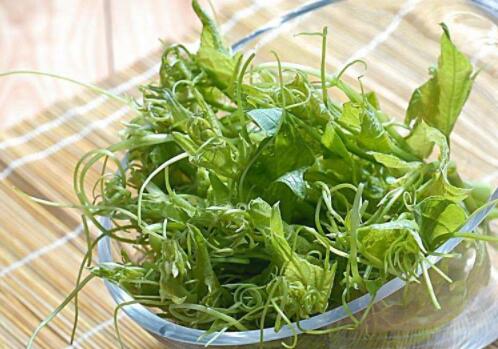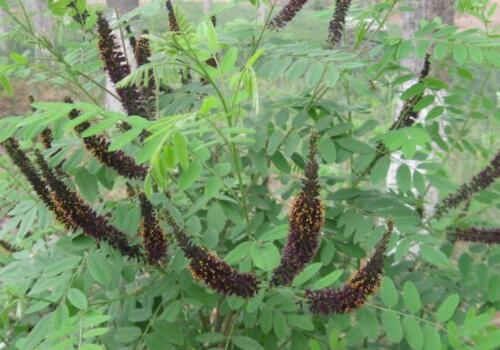When do pumpkin seedlings usually be planted? How long will it blossom and bear fruit? Can I eat it? How do you cook it? Attached planting method
Pumpkin, also known as pumpkin, pumpkin, rice melon, pumpkin, pumpkin, annual trailing herbs, introduced into China in the Ming Dynasty, is now widely planted in the north and south. When do the pumpkin seedlings usually be planted? How long will it blossom and bear fruit? Can I eat it? How do you cook it? What are the planting methods? It was learned from he Xiangsheng that pumpkin was planted in spring from January to March and from July to August in autumn, with seedling transplanting in spring and direct seeding in autumn.

How long does pumpkin seedlings blossom and bear fruit?
Flowering:
Pumpkins generally bloom about a month after planting, first male flowers, and then female flowers. If the pumpkin grows too nutritionally, the flowering will be delayed and the moisture will be controlled.
Results:
Pumpkin growth period is about 4-6 months, depending on the climate. From the opening of the first female flower to fruit ripening, stem and leaf growth and flowering at the same time, to the physiological maturity of melon needs 50-70 days. The first female flower appeared in the 5th-10th leaf node of the main vine in the early-maturing variety, and about the 24th leaf node in the late-maturing variety. After the first female flower appears, the female flower appears every few nodes or successive nodes. No matter whether the variety matured sooner or later, the melon bearing the first female flower was small and the seeds were few, especially in the early maturing variety.
Can I eat pumpkin seedlings?
Pumpkin seedlings can be eaten.
Pumpkin seedlings are rich in various mineral elements and cellulose, rich in nutrition and unique in flavor. The tender pumpkin seedlings, tender stems and leaves, tender leaves, tender petioles, flower stems and buds are all edible. Pumpkin seedlings are rich in vitamins, chlorophyll, minerals, cellulose, zinc, copper, magnesium and other trace elements! And it also has the following functions:
1, treatment of asthma: steamed pumpkin mixed with honey to eat, once in the morning and evening, long-term use.
2. Cure chronic cough: fry the pumpkin vine to the head, insert it into a bottle, let the juice flow in, and rinse the juice with boiling water 24 hours later. Treatment of edema, ascites, dysuria: pumpkin pedicel burning research, warm water service, three times a day, two grams each time.
3, treatment of habitual abortion: 3 pumpkin stalks, 120 grams of barley, fried with water for several days.
4. Treat burns and scalds: smash pumpkins to extract juice and apply wounds. You can also apply pumpkin rattan juice to the wound three times a day. Treatment of bronchial asthma and senile chronic bronchitis: 500 grams of fresh pumpkin, 20 red dates, appropriate amount of brown sugar, plus boiled soup, twice a day. Treat dysentery: drink with pumpkin leaf soup.
How do you cook pumpkin seedlings?
Pumpkin seedlings in soup
1. Pick and wash the pumpkin seedlings, blanch them in boiling water for two minutes and put them in a container.
2. Put oil in the wok and add sliced garlic, ginger and preserved eggs to stir-fry until yellowish on the surface.
3. Add a bowl of water, and then put in a Jiale pork bone soup (if there is a broth is the best), cook for about three minutes, the soup color turns white and pour into the container of pumpkin seedlings.
Stir-fried pumpkin vines
1. Remove the leaves and old stalks of the pumpkin vine. The small leaves on the tender tips of the vines can be retained, and so can the whiskers on the vines. Then carefully tear off the outer skin of the pumpkin vines and pinch them into small pieces, tear the vines into small segments, tear off the excess tendons, and pinch the rattan whiskers into segments. Wash and filter water together.
2. Sliced garlic cloves and shredded red pepper
3. Heat oil in the pan, stir-fry garlic cloves and shredded red pepper under high heat, quickly stir-fry pumpkin vines until cut off, mix well with salt and chicken essence.
Attached: planting method of pumpkin seedlings
1. Select varieties.
Choose local seedlings, melons and long, thick pumpkins as species, such as pillow melon, plate melon, cow leg melon, Dahongpao melon, yellow petal melon and so on. It is not suitable to use varieties with short melon seedlings.
2. Soaking seeds to accelerate germination.
The pumpkin seeds were exposed to the sun for 2 days, put into 50 ℃ hot water and stirred continuously. When the water temperature dropped to about 30 ℃, the seeds were soaked for 15-20 minutes, then cooled naturally, and the seeds continued to soak for 7-12 hours. After soaking the seeds, the germination temperature was maintained at about 30 ℃, and the seeds could germinate in two days.
3. Fine soil preparation.
Choose the land with good drainage, low groundwater level and fertile soil to plant pumpkin seedlings. Divide the border by 1.5 meters wide, open a good ditch, the ditch is 30 cm wide, the ditch is 15-20 cm deep, and the drains are opened on four sides.
4. sow seeds at the right time.
In order to advance and prolong the time on the market, sowing usually begins in March, and can be sown in batches until August. Sow the seed ditch according to the row spacing of 20 cm, plant spacing of 10 cm, two seeds in each hole, water thoroughly after sowing, and cover 2 cm thick nutritious soil.
5. Fertilize in time and apply sufficient base fertilizer.
Add 2000-2500 kg of rotten cow manure or 2500-3000 kg of soil fertilizer and 20 kg of phosphate fertilizer per mu. After sowing, drench thoroughly with rotten dung or biogas liquid, then spread it flat on the border with plastic film, and compact it with soil to keep warm. Let the seedlings grow under the film after emergence. Topdressing generally uses mature human and animal manure water, and should frequently ensure an adequate supply of manure water to promote the rapid growth of melon seedlings. The plant was re-applied with available nitrogen fertilizer in time after each harvest to promote the early emergence of axillary buds.
6. Harvest in time.
When the melon seedlings grow to 40 cm high and have 5-6 true leaves, they can be harvested in batches, leaving 1-2 true leaves at the base to cut off the tender seedlings in the upper part. Spraying 80 mg / kg "920" solution 5-7 days before each harvest could increase yield by more than 30% and reduce the formation of crude fiber in basal nodes.
Time: 2019-03-19 Click:
- Prev

"Bamboo treasures" how much is the price of gold-inlaid jade bamboo? Is it suitable for planting in the courtyard? How do you plant it?
Gold-inlaid jade bamboo is a treasure of bamboo, its rarity is on the bright yellow bamboo pole, in each branch and leaf is born into a shallow turquoise trench, the position is crisscross. How much is the gold-inlaid jade bamboo? Is it suitable for planting in the courtyard? How do you plant it? Learned from the bamboo base in Jiangsu Province
- Next

Deciduous shrub Amorpha seedlings about how much is a tree? When will it blossom? How many years will it turn out? Planting technology
Amorpha is also known as cotton, pepper, sliver, acacia, Amorpha, lath, large leaves and rich nutrition, containing a lot of crude protein, vitamins, etc., is a nutritious feed plant. So how much is the seedling of Amorpha fruticosa? When will it blossom? How long is the florescence? What are the planting techniques?
Related
- Fuxing push coffee new agricultural production and marketing class: lack of small-scale processing plants
- Jujube rice field leisure farm deep ploughing Yilan for five years to create a space for organic food and play
- Nongyu Farm-A trial of organic papaya for brave women with advanced technology
- Four points for attention in the prevention and control of diseases and insect pests of edible fungi
- How to add nutrient solution to Edible Fungi
- Is there any good way to control edible fungus mites?
- Open Inoculation Technology of Edible Fungi
- Is there any clever way to use fertilizer for edible fungus in winter?
- What agents are used to kill the pathogens of edible fungi in the mushroom shed?
- Rapid drying of Edible Fungi

